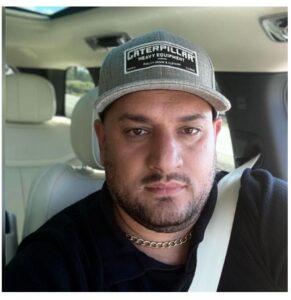Introduction
Moving across the country can be an exciting adventure, but it also comes with its challenges. Packing properly is one of the most important steps to ensure that all your belongings arrive safely at your new home. In this blog, we’ll share essential packing tips that will help you stay organized and make your cross-country move as smooth as possible.

1. Plan Ahead
Create a Packing Timeline:
Start planning your packing process well before moving day. Set up a timeline and break down the packing tasks into manageable chunks. For example, you might decide to pack one room per day. Sticking to this schedule will help you avoid last-minute stress and make the whole process feel less overwhelming.
Inventory Checklist:
Make a list of everything you plan to move. This checklist will help you keep track of your belongings and decide what to keep, donate, or throw away. Having a clear inventory will also help you stay organized and reduce the amount of stuff you need to move.
2. Gather Packing Supplies
Essential Packing Materials:
To pack effectively, you need the right supplies. Invest in packing paper, tape, markers, bubble wrap, sturdy boxes, and packing supplies. These materials will protect your items and help ensure they arrive at your new home in good condition.
Specialty Packing Supplies:
For certain items, use specialty packing supplies. Wardrobe boxes are great for clothing, while dish packs offer extra protection for fragile kitchenware. Furniture covers can help prevent scratches and damage during transport. Using these specialized materials can make packing easier and more efficient.
3. Organize and Sort
Room-by-Room Packing:
Packing room by room can help you stay organized. Start with less-used rooms and work your way to the more frequently used ones. This method allows you to keep track of what’s packed and what still needs attention. It also helps avoid mixing items from different rooms, which can make unpacking more confusing.
Categorize Items:
Group similar items together, such as books, clothing, and kitchen utensils. Sorting items into categories makes it easier to pack and unpack. You’ll know exactly where everything is, which will save you time and hassle when you start unpacking in your new home.
4. Packing Techniques
Protect Fragile Items:
Wrap fragile items like dishes and glassware in bubble wrap or packing paper. Make sure each item is well-protected to prevent breakage during the move. For extra protection, you can use towels or blankets to cushion these items inside the box.
Label Boxes:
Each box should have its contents and the room to which it belongs clearly labeled. This labeling will help your movers place the boxes in the correct rooms at your new home, making unpacking much easier. You can use a marker or label maker to write the information on the side of the box.
Efficient Packing:
Pack heavier items in smaller boxes and lighter items in larger boxes. This approach helps avoid overloading boxes and makes them easier to lift and carry. Also, try not to overpack boxes, as this can cause them to break and lead to damage to your belongings.
5. Handling Specialty Items
Electronics:
Pack electronics carefully by removing and labeling cords and accessories. If you still have the original packaging, use it; otherwise, wrap the electronics in bubble wrap and place them in sturdy boxes. Proper packing will protect your valuable tech items from damage.
Appliances:
Prepare large appliances like refrigerators and washing machines for the move by cleaning them and disconnecting any hoses or cords. Secure any loose parts with tape and wrap the appliances in protective materials. This preparation will help ensure that your appliances arrive at your new home in good working condition.
Artwork and Antiques:
Valuable items such as artwork and antiques need special care. Use high-quality packing materials and techniques to protect these delicate pieces. For very valuable or fragile items, consider hiring professional movers who specialize in handling such items.
6. Packing Your Essentials
Essential Kit:
Pack a separate box or bag with items you’ll need right away when you arrive at your new home. This should include toiletries, medications, important documents, and a few changes of clothes. Your first few days in your new house will be more comfortable if you have these necessities close at hand.
Personal Items:
Keep your most valuable and irreplaceable items with you during the move rather than placing them in the moving truck. This includes things like jewelry, important documents, and family photos. Keeping these items close ensures they are safe and easily accessible.
7. Moving Day Preparations
Final Check:
Before the movers arrive, do a final check of your home to make sure everything is packed and ready to go. Double-check that nothing has been left behind and that all boxes are properly taped and labeled.
Communicate with Movers:
Provide clear instructions to your moving company and discuss any special requirements you have. Let them know if there are items that need extra care or if there are any specific instructions for the move. Good communication will help ensure that everything goes smoothly.
8. Unpacking and Settling In
Prioritize Unpacking:
Once you arrive at your new home, start by unpacking the most essential rooms, such as the bedroom and kitchen. Getting these rooms set up first will make it easier to get settled and feel at home more quickly.
Dispose of Packing Materials:
After unpacking, properly recycle or dispose of packing materials and boxes. Keeping your new home tidy and organized will help you adjust more comfortably and create a pleasant living environment.
Conclusion
In summary, packing for a cross country move requires careful planning and organization. By following these essential packing tips, you can ensure that your belongings are well-protected and that your move goes as smoothly as possible. Start early, stay organized, and remember to pack an essential kit to make your transition to your new home more comfortable. For professional help with your move, contact our moving company and explore our moving services to ensure a stress-free relocation experience.









